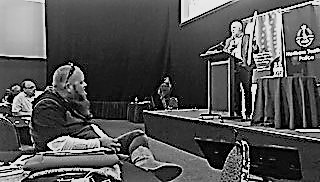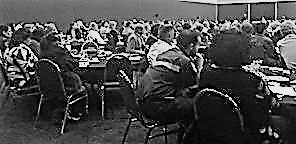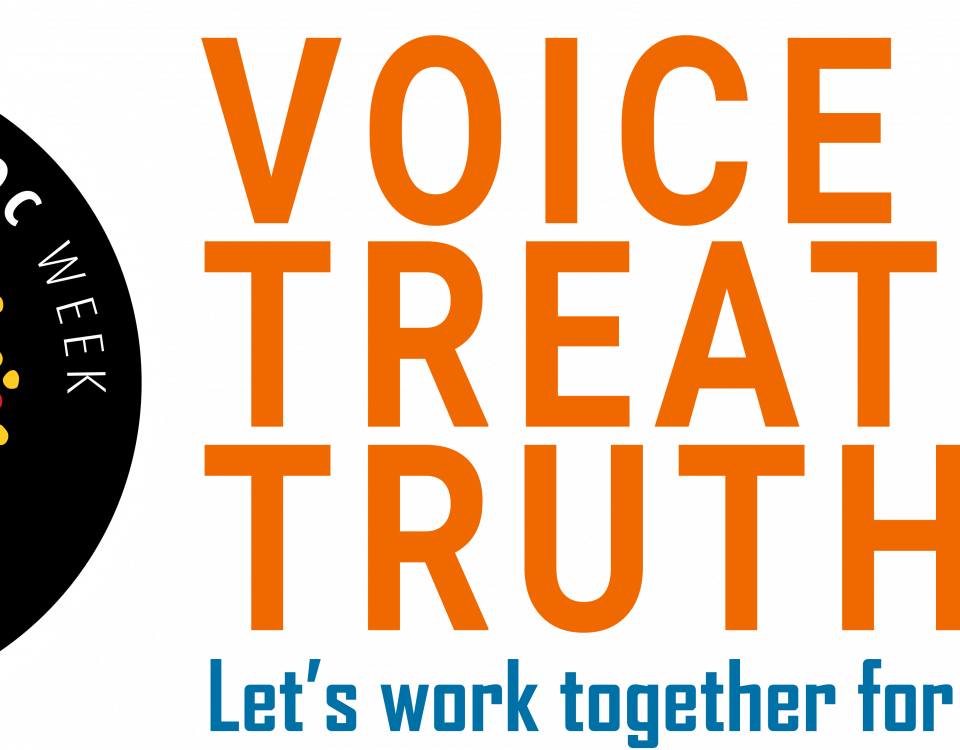Constitutional recognition and the Uluru convention – what it all means
June 2, 2017
preventing suicide
June 19, 2017Image: Anglicare’s David Pugh closing the Indigenous Family Violence Policing Conference, displaying a shield made by the Men’s Tjilirra Movement (MTM). MTM Program Manager, Jamie Millier Tjupurrula seated in foreground.
By Pamela Nathan
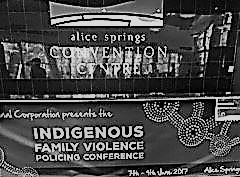 CASSE presented at the inaugural Indigenous Family Violence Policing Conference on the 9th June in Alice Springs.
CASSE presented at the inaugural Indigenous Family Violence Policing Conference on the 9th June in Alice Springs.
It was an interesting conference with leading stakeholders and police presenting and in discussion, including police, Supreme Court judge, barrister, family violence trainers and facilitators, women’s refuge workers, feminist researchers and more.
A few thoughts came to mind.
Before I make comment I want to say that the bottom line is zero tolerance of violence – women and children need protection and most victims are female.
Reflections:
- It is very important not to dehumanise and objectify the perpetrator. Let us not forget that the perpetrator has more than likely been a witness and victim to family violence.
- Women are treated as objects when they are assaulted. To treat perpetrators as objects reverses and parallels the process.
- Every perpetrator has a story.
- It is not helpful to refer to perpetrators as ‘crooks’, nor to mobilise a policy of ‘get the crooks.
- Most perpetrators, in my experience, have experienced terror as a child and can become violent when feeling terrorised. This can be called ‘identification with the aggressor’. This is notwithstanding causal triggers such as jealousing or controlling, bullying behaviour etc.
- It is important to acknowledge that there can be violent attachments and not just the controlling, violent male husband.
- Indigenous violence is more than controlling, emotionally deregulated husbands.
- There is lateral violence, massive trauma underlying the explosions of violence, massive depression and addiction leading to mindless violence, breakdown of traditional law and marriages leading to jealousing, ‘chaotic’ lives, and more.
- Making violence gender binary, splitting males into perpetrators and females into innocent, saintly victims is not helpful or true.
- To refer to ‘them’ as the violent perpetrators, namely indigenous males as the problem to be solutionised, misrepresents the problem and places the responsibility on the disempowered, unrecognised and the unequal.
- It is not ‘their ‘problem it is our problem.
- The problem is psychosocial, economic, cultural and racial.
- The problem is post-colonial and bears the legacies of trauma trails of colonialism.
- Traditional Law is not recognised and is considered acts of barbarism.
- Indigenous males are not the only violent perpetrators.
- There are female violent offenders and they may need rehabilitation and therefore may need to be in the justice system.
- In all the talk of recidivism there is not the corollary talk about treatment programs for violent offenders.
- Where are the safe houses for males? Where are the cultural places for males? Where are the culturally appropriate, Aboriginal controlled treatment programs for males? Only a couple of treatment programs exist.
- To talk Indigenous family violence must necessarily involve the male perpetrators.
- CASSE/CAAC research shows the men are ‘hurting inside’, hiding their pain and much more.
- In the words of Lord John Alderdice: “All our problems are fundamentally about our relationships between peoples and that the fundamental is ‘creating new relationships’. If one community feels humiliated and disrespected then this is toxic and very problematic”. He says that respect needs to follow recognition.
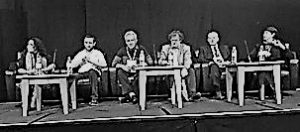
Closing Panel Discussion: Jacinta Price, Richard (Tangentyere), Charlie King, Pat McIntyre, Superintendent Matthew Ryan, Dr Heather Nancarrow





